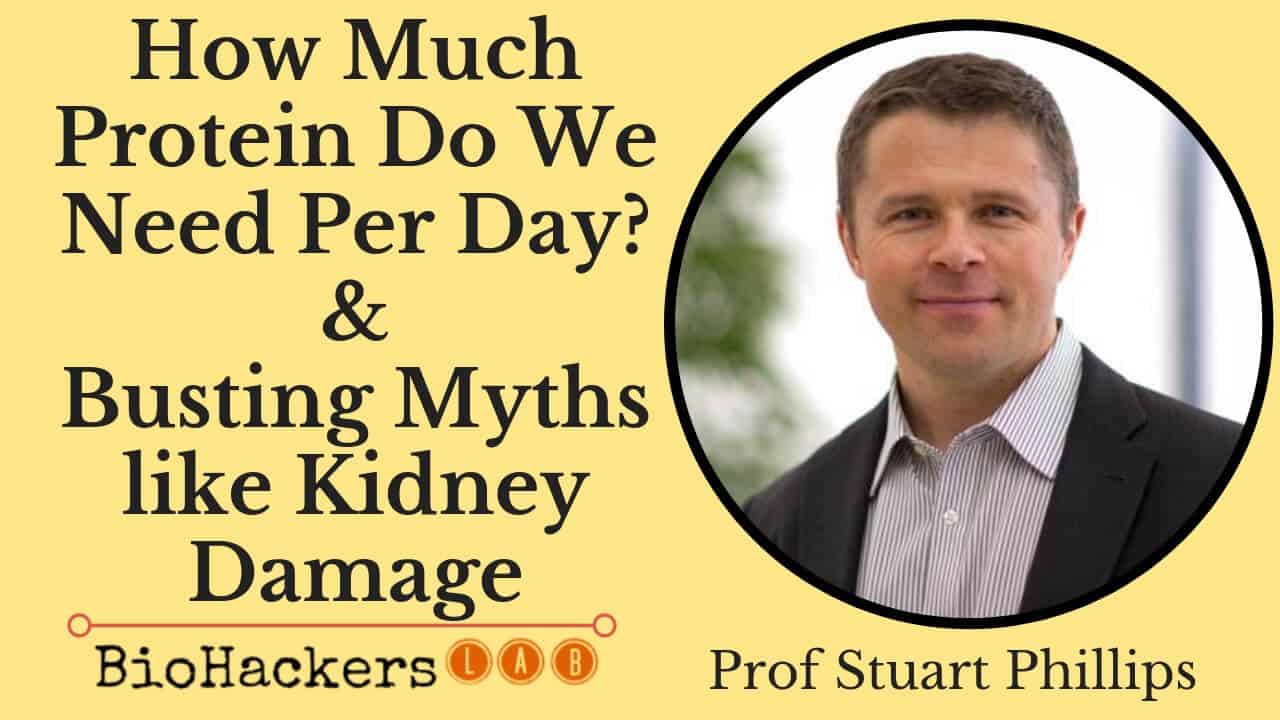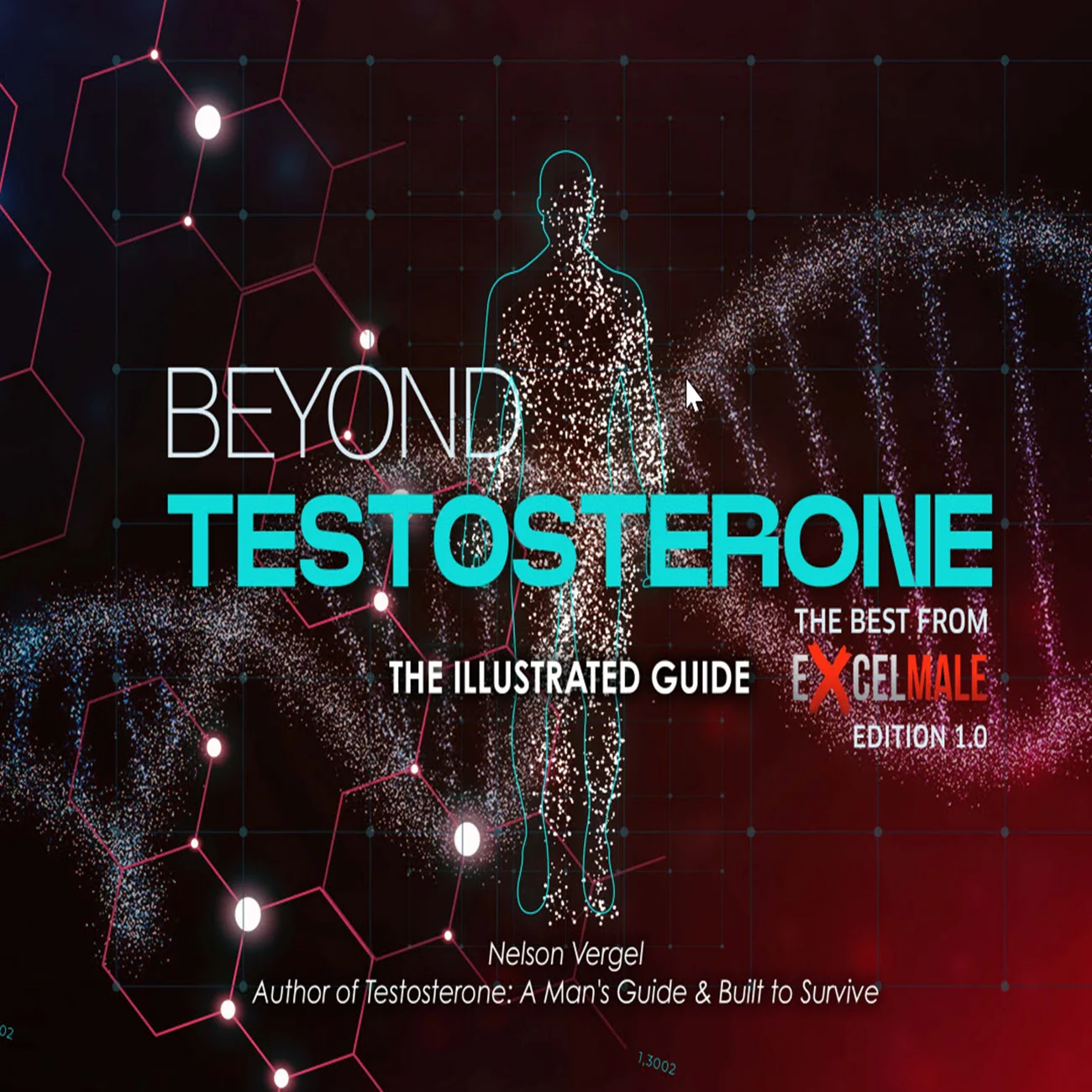Bringing together two of the top minds, with differing (though less so now than ever before) perspectives on protein as it relates to health from multiple different angles, watching their circles of agreement overlapping more and more in real time, is amazing. But we push the envelope, ask the right questions and you find where Reality Meets Science.
Finding Peace With Protein
A conversation distilled into actionable insights from Professors Christopher Gardner (Stanford / Harvard) and Stuart Phillips (McMaster University), moderated by Tom Rifai, MD.
1. Why Talk About Protein?
Protein sits at the intersection of longevity, muscle maintenance, weight management, satiety and environmental impact. Yet confusion abounds—particularly around plant- versus animal-based sources, optimal intakes, and the “right” strategy for different life stages. The discussion below untangles these issues and offers practical guidance.
2. Plant vs. Animal Protein: How Different Are They?
Question | Key Points From the Experts |
Is animal protein “superior”? | - Early scoring systems (e.g., PDCAAS) favored animal protein for digestibility and essential amino-acid content. - Newer research shows comparable muscle-related outcomes when total intake is adequate; pea or soy protein can match whey in many contexts. |
When might plant protein fall short? | - Older adults at or below the RDA (0.8 g kg⁻¹ day⁻¹) and eating strictly vegan may need extra attention to quantity and amino-acid diversity. - Close to the RDA, small quality gaps matter more. |
Practical takeaway | - For most people eating ≥1.0 g kg⁻¹ day⁻¹, plant and animal proteins are functionally equivalent for muscle health. - Focus on overall diet quality, not single amino-acid scores. |
3. The Underrated Power of Legumes
Gardner highlighted the striking under-consumption of beans, lentils and peas in North America—despite:
· ~20% protein by weight (double most grains).
· High fiber, low saturated fat, rich micronutrient profile.
· A much lower environmental footprint than meat.
Regular legume intake is common in Asian, Mediterranean, Latin-American and African cuisines. Flatulence concerns typically fade as the gut microbiome adapts.
4. Muscle Maintenance Across the Lifespan
Aging & “Anabolic Resistance”
· With age—and especially inactivity—muscle becomes less responsive to protein.
· Resistance exercise is the primary driver to retain or build muscle; protein is “the sprinkles on top.”
Post-menopausal considerations
· Estrogen loss does not directly accelerate muscle loss; inactivity does.
· Loading the muscle (weights, heavy yard work, manual labor) safeguards strength far more than simply raising daily protein.
5. Protein During Calorie Restriction
Scenario | What Happens | Expert Advice |
Moderate weight loss | Standard diets typically lose ~25% lean mass with the fat—acceptable and often minimized through lifting. | - Keep protein “the calorie you cut last.” - Aim ≈1.2 g kg⁻¹ day⁻¹ when dieting plus 2–3 weekly resistance sessions. |
Aggressive deficit / GLP-1 drugs | Faster weight loss, proportionally more muscle loss (seen in bariatric surgery, VLCD studies). | - Combine medication or VLCD with structured resistance training to preserve lean tissue. |
Body recomposition (lose fat and gain muscle) | Possible in novices or short-term trials but “diabolical” to sustain. Subjects report extreme hunger & fatigue. | - Not a realistic long-term goal for most; prioritize either fat loss or muscle gain in phases. |
6. Protein, Satiety & the “20% Plateau”
Claims that protein is uniquely satiating are mixed. In long-term trials (e.g., A-TO-Z, DIETFITS) participants gravitated toward ~20% of calories from protein—regardless of assigned diet—while still differentiating carbs and fats. Possible explanations:
· Removing refined grains & added sugars improves fullness independent of protein.
· Gastric emptying (fat) and fiber-water retention (carbs from whole plants) also drive satiety.
Bottom line: focus on whole-food sources and diversify macros rather than fixating on a specific percentage.
7. Does Higher Protein Shorten Lifespan?
· Animal studies: Protein or methionine restriction extends life in worms, flies and mice.
· Human data: Observational cohorts show no clear link between total protein and mortality, but replacing animal with plant protein generally associates with longer life.
· Possible confounders: saturated fat, fiber absence, overall diet pattern, and—crucially—physical activity.
Phillips’ view: if active muscle has a place to “park” amino acids, excess-protein concerns likely diminish. Gardner adds that without 60-year randomized trials, we must rely on epidemiology—and there, plant-based protein wins modest points for longevity.
8. Soy Safety—Clearing Persistent Myths
· Isoflavones do not raise breast-cancer risk; large cohorts and meta-analyses show neutrality or protection.
· Soy foods (edamame, tofu, tempeh) supply complete protein, fiber and unsaturated fats.
· No credible evidence that moderate soy feminizes men.
9. Actionable Takeaways
1. Resistance training first; protein second. Exercise sets the stage for muscle retention at any age.
2. Hit at least 1.0–1.2 g kg⁻¹ day⁻¹ (higher in energy deficit, older age, or intense training).
3. Favor legumes, nuts, seeds—and fish/poultry if omnivorous. Diversify sources for nutrients, fiber and environmental gains.
4. During weight loss, cut refined carbs & fats before protein. Combine with lifting to keep lean mass.
5. Don’t fear soy. Enjoy edamame, tofu and tempeh as nutrient-dense staples.
6. Longevity nuance: Whole-food, plant-forward patterns and an active lifestyle matter more than obsessing over single amino acids.
10. Conclusion
The path to “making peace with protein” isn’t about obsessing over powders, grams or mythical perfect ratios. It’s about:
· Moving your body with meaningful resistance,
· Eating predominantly whole, plant-rich foods—especially legumes,
· Ensuring adequate (not excessive) total protein, and
· Viewing muscle as a lifelong organ of health, not just aesthetics.
Adopt those principles and the protein puzzle largely solves itself.
Last edited by a moderator:














